P-36 Curtiss. Part II. Under the banner of different countries
The French Air Force became the largest customer of Hawk abroad. After the Moran-Solnier M.S.406 fighter, the Curtissa plane was the most numerous in the fighter units of France by the time the German offensive began in the spring of 1940.
In February 1938, two months before the readiness of the first production copy of the P-36A, as part of an order from the US Army, the French government began negotiations with Curtiss on the purchase of 300 Hawk-75A fighters for its Air Force. The Hawk -75A was an export model of the P-36A and could be powered by either a Pratt & Whitney Twin Wasp or Wright Cyclone engine.
However, the price of the fighter seemed too high for the French - it was two times higher than for its own Moran-Solnier M.S.406 fighter. In addition, the proposed pace and timing of deliveries (the start of deliveries of the first 20 vehicles — March of the 1939 of the year, and further on the 30 aircraft monthly) were also unacceptable. If we consider that Curtiss could not be kept in the schedule of deliveries for the Air Force of the American Army, it is clear that the US Army opposed this contract.
However, the rapid rearmament of Germany urgently required a renewal of the French fleet aviation, and the French insisted on continuing negotiations. As a result of the direct intervention of President Roosevelt, the leading French test pilot Michel Detroit in March 1938 was allowed to fly around the pre-production Y1P-36 on Wright Field. The tester presented an excellent report, and Curtiss promised to speed up supplies if the French finance the construction of a new assembly line.
The French were still embarrassed by the high price, and on April 28, 1938, they decided to postpone the final decision until the tests of the MB-150 Block, the expected price of which was two times lower. However, the MB-150 was still a very "raw" aircraft and had to be finished for another two years. Recycling the MV-150 Block promised to be an expensive and time-consuming affair, but there was just no time. As a result, on May 17, 1938, the French Minister of Aviation decided to purchase Curtiss Hawk, and an order followed for 100 Hawk gliders and 173 Pratt & Whitney R-1830 Twin Wasp engines. Under the contract, the first Hawk was to be flown to Buffalo by November 25, 1938, and the last 100th aircraft was to be delivered by April 10, 1939.
The first production version of the Hawk received the brand designation Hawk -75-1, and it was the 100 of these machines that the French ordered. According to the original plan, the majority of the Hawks were to be transported across the ocean in a ship in a disassembled form for subsequent assembly in France at the SNCAS (Central National Aircraft Industry Association) in Bourges. Hawk-75-1 was flown to Buffalo in December 1938 of the year - only a few days late. The first unassembled vehicles were delivered to France 14 in December 1938. Another 14 Hawks were delivered by the Air Army assembled for testing, and the rest were delivered in a disassembled form.
In March-April 1939, the 4-th and 5-th fighter squadrons of the French Air Force launched rearmament from the Devutins-500 and -501, and by July 1 the 4-th squadron had the 54 Curtissa fighter, and the 5-y-yNNXX y-yn YX The rearmament was not without problems: one "Hawk" -41А-75 was broken when landing after the engine overheated; another crashed after falling into a flat spin when performing aerobatics with full tanks. It must be said that during the entire time of operation of the Hawk-1, he had problems with handling and maneuverability with full tanks.
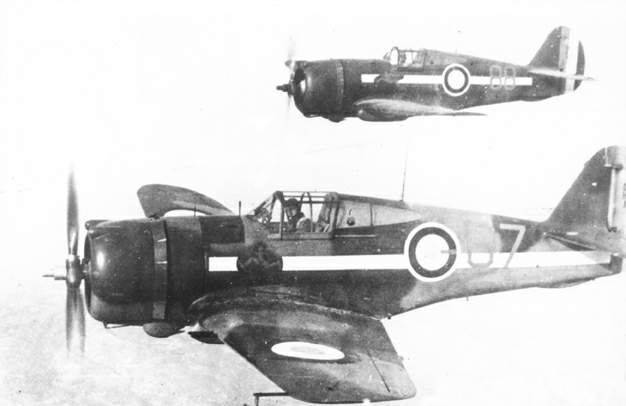
The Hawk-75A-1 had a Pratt & Whitney R-1830-SC-G engine, which developed 950 hp. on takeoff. The fighter was armed with four 7,5-mm machine guns: two in the nose of the fuselage and two on the wings. Except for the altimeter, all instruments had a metric graduation. The seat was adapted for the use of the French Lemerser parachute. RUD worked in a "French manner" - in the opposite direction compared to British and American aircraft.
The French have retained the factory marking of the aircraft - pass-through for each model. In addition, the keel indicated: Curtiss H75-C1 № 09. "C" meant Сhasse (fighter), "1" - single, "9" - the ninth aircraft, ordered by France. Following the placement of the first order for Hawk-75 in May 1938, a preliminary request was made for the following 100 machines. This request was formalized by the 8 March 1939. The new series differed from the A-1 with an additional pair of 7,5-mm machine guns in the wing, a slightly reinforced tail section of the fuselage and the possibility of replacing the R-1830-SC-G engine with a more powerful R-1830 -СС2-G, which developed up to 1050 l. with.
The new model received the brand designation "Hawk" -75А-2. Four wing machine guns and a new engine made the fighter equivalent in combat qualities of the XP-36D, tested by the US Army. The first A-2 was delivered to the French in May 1939 of the year. The first 40 of them did not differ from the A-1 either in armament or in the engine. The new engine and reinforced weapons began to really set only with the 48-th aircraft series. The 135 Hawks-75-3 was a version of the Hawk for the improved 1200-powerful R-1830-S1CCG engine and with weapons like the A-2 (six 7,5-mm machine guns). In fact, before the defeat of France, about 60 "Hawk" -75А-3 arrived there, and the rest came to the UK.
The last order, received from France before its defeat, concerned the 795 fighters Hawk-75-4. Their main difference from the A-3 was the installation of the Wright R-1820-G205A Cyclone engine with a capacity of 1200 l. with. The variant with the Cyclone engine was distinguished by a shorter bonnet of somewhat larger diameter and the absence of louvers behind the bonnet and accessories around the ports of the machine guns. Actually, 284 A-4 was built on this order, and only six of them went to France.
French Hoki entered the air battles almost from the first days of the war in Europe. 8 September 1939. The 11 / 4 Fighter Regiment, armed with the Hawks-75, recorded two Messerschmitts Bf.109E - the first aircraft shot down by the Allies in aerial combat. However, by the time of the invasion of France in May 1940, it was obvious that the Hawk was inferior to the Messerschmitt fighter. In total, Hoki have credited 230 with confirmed and 80 “probable” victories, with only 29 of their aircraft lost in air battles. Although these figures are too optimistic, they say that the Hawk showed himself quite well in battle. Of course, he was inferior to Messerschmitt Bf.109E in speed and armament, but he had better horizontal maneuverability and controllability. Thus, the most titled ace of the French Air Force in 1939-40. Lt. Marine La Mesle 20 won his victories in Hawk.
In total, the French managed to take the 291 fighter "Hawk" -75А, but some of them died during transportation. As mentioned above, only six A-4 reached France before the armistice. 30 A-4 were lost on transports, 17 was unloaded on Martinique, and another six - on Guadeloupe. Later in 1943-1944. These machines were sent to Morocco, where they were used as training. In this case, the engines "Cyclone" -9 they were replaced by "Twin Wasp." The remaining undelivered Hokes to the French were commissioned by England under the designation Mohawk IV.
After the defeat of France, those "Hoki" who were not on the territory of "free" France or did not have time to fly to England turned out to be trophies of the German troops. Some of them were even packed in boxes. They were sent to Germany, collected at Espenlaub Flugtsoygbau, equipped with German equipment, and then sold to Finland.
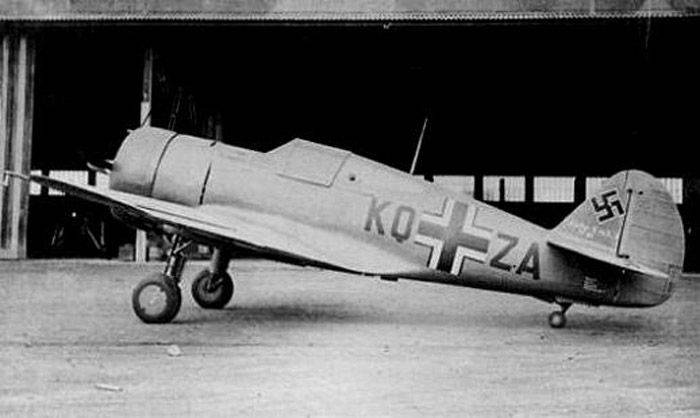
The Finns got the 36 of the former French Hawks -75, as well as eight former Norwegians. Finnish Hoki were used on the side of the Axis countries when Finland 25 June 1941 entered the war against the Soviet Union. “Hoki” completely satisfied the Finns and remained in service with them until XNUMHgoda.
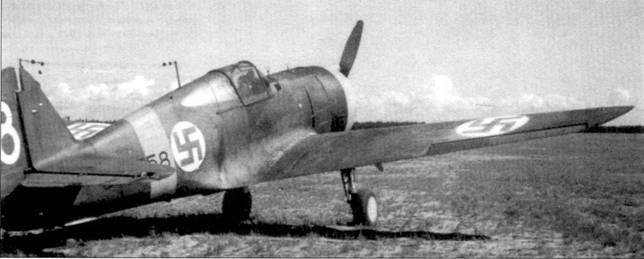
After the truce, the French fighter regiments 1 / 4 and 1 / 5 continued to use the Hoki as part of the Vyavian government's air force. The first regiment was in Dakkara, the second - in Rabat. The Vishisk Hoki-75A participated in battles with the Americans and the British during Operation Torch-Allied landings in North Africa in the autumn of 1942. During the air battles with deck fighters Grumman F4F Wildcat the Vishisk Hoki shot down seven planes and lost 15. It was one of the few cases of using the American aircraft against the Americans themselves.
After the test of the Hawks in France by British pilots, the British government showed interest in them. Especially attracted by the good maneuverability of the fighter and the ease of its management. So, in the entire speed range, ailerons were easily shifted, while on the Spitfire at speeds above 480 km / h it was practically impossible to control them. In December 1939, the British government took one Hawk (the 88-th serial Hawk-75-2) for hire from the French and conducted its comparative tests with Spitfire -I. In many aspects, the Hawk turned out to be better than the Spitfires. The British confirmed that the Hawk has excellent handling in the entire speed range. Dive speed -640 km / h - exceeded the speed of a dive "Spitfire". When conducting agile combat at speeds of the order of 400 km / h, the Hawk had a higher chance of winning, thanks again to better handling and better visibility. However, the Spitfire could always get out of the fight using higher speed. When diving "Spitfire" on "Hawk," the latter quickly went into a turn and dodged. “Spitfire” did not have time to wrap on the “Hawk” and always missed. The propeller torque of the Hawk on takeoff was less pronounced than on the Spitfire, and during the climb of the Hawk it was easier to control. True, the “Hawk” accelerated worse on a dive.
After the tests, the British government at one time wanted to order the Hokes for the Royal Air Force, but for some reason these plans did not materialize. It was only with the fall of France in June that several Hawks hit the British Isles.
These were the Hoki-75A who did not reach France (mainly A-4), as well as several vehicles in which French pilots flew to the British Isles in order not to be captured by the Germans. In the Royal Air Force they received the designation "Mohawk". Total Royal Air Force received 229 aircraft of this type. Most of them were former French cars, as well as several former Persian Hawks and several cars built in India under license.
The former French “Hawk” -75А-1 wore the designation “Mohawk” -I, and “Hoki” -75А-2 - “Mohawk” -II. More 20 former French "Hawk" -75-3, trapped in the UK, received the designation "Mohawk" -III. The designation "Mohawk" IV received the rest of the French "Hoki" -75-4, which were already supplied to the new owners.
"Mohawk" in service with the Royal Air Force equipped with British equipment, including 7,7-mm machine guns "Browning". The "French" RUD was replaced by the "British" one, that is, the engine revolutions were now added when giving the RUD itself. The Royal Air Force decided that the "Mohawk" is not suitable for European theater. As a result, 72 of them were transferred to the South African Air Force. At one time, the eight "Mokhok" was all that defended the North-East India. At the front in Burma, this type remained in combat units until December 1943, until they were replaced with more modern fighters. 12 "Mokhok" was transferred to Portugal.
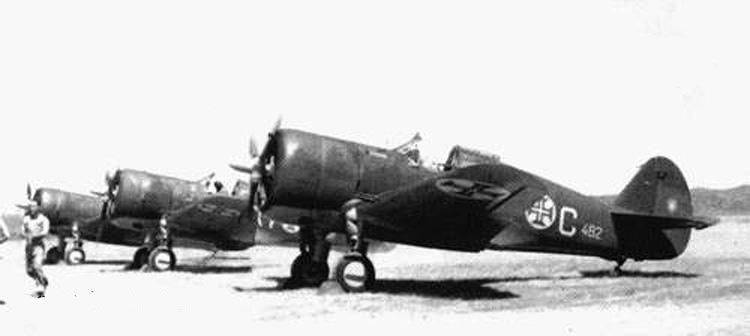
The designation "Hawk" -75А-5 was assigned by Curtiss to aircraft under the "Cyclone" engines, intended for assembly in China by the Central Aircraft Building Company (CAMCO). In China, one assembled aircraft was actually delivered and several in a disassembled form. After assembling several Hawks, CAMCO was transformed into Hindustan Aircraft Ltd., based in Bangalore, India. In April, the Indian government placed an order for Hindustan to produce 1941 Hawk-48A fighters for the Cyclone-75 engines, as well as for the necessary spare parts. Hindustan acquired a license from Curtiss, and on July 9 31 took off the first fighter built in India. Shortly after the first flight, the priorities were changed, with the result that the production of aircraft in India, it was decided to stop. In total, the Indian company delivered only five aircraft. In the Royal Air Force, they were also called "Mohokami" IV.
The government of Persia (present-day Iran) issued an order for ten “Hawks” -75А-9 for the Wright R-1820-G205А engines. They got to Persia shortly before the country's occupation by British and Soviet troops 25 August 1941. The Allies found the Hoki in original packaging. The British took these planes from Persia and transferred them to India, where they entered the 5 Squadron of the Royal Air Force under the designation "Mohawk" IV.
In the fall of 1939, an order for 12 Hawks -75A-6 for Pratt & Whitney R-1830-S1CZG Twin Wasp engines with a capacity of 1200 hp. was hosted by the Norwegian government. Later, another 12 fighters were ordered, which brought the planned volume of deliveries to 24 Hawks. Deliveries began in February 1940, but only a few A-6s had been received before the German invasion. The Germans captured all the Hawks, some even in their original packaging, and then sold them to Finland along with 36 Hawks captured in France.
Norway, shortly before the occupation, the Germans also ordered the 36 Hokov-75А-8 for the Wright R-1820-G205А Cyclone engines with the 1200 horsepower. After the German invasion of Norway, these aircraft were purchased by the US government. Six of these were delivered in February 1941 to Free Norway forces to train their air forces in Canada, and the remaining 30s were handed over to the US Army under the designation Р-36С.
The Netherlands ordered 20 fighters "Hawk" -75А-7 with engines "Cyclone", but after the occupation of the Netherlands by the Germans А-7 in May 1940 were delivered to the Dutch East India. They entered service with the 1 Squadron of the Royal Army Air Corps of East India, and on December 8 1941 went into battle against the Japanese aggressors. Yielding numerically and qualitatively to the Japanese Zero, by 1 February 1942, all the Hoki were lost.
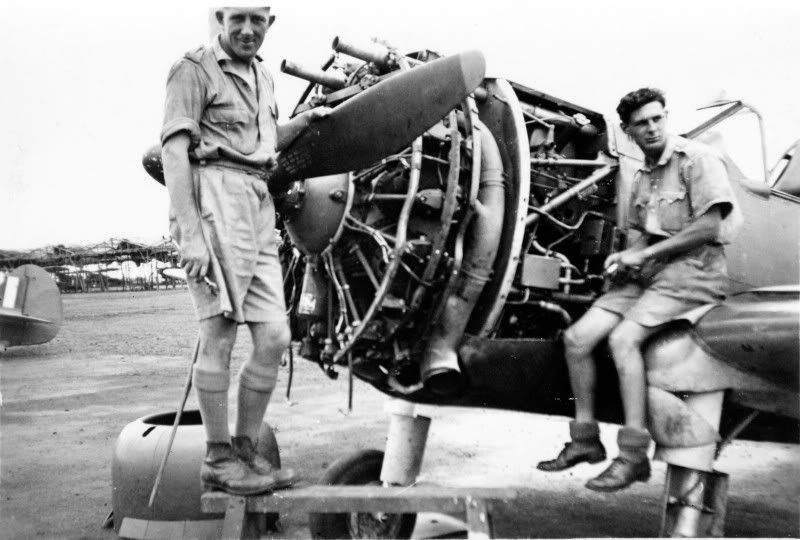
At the beginning of 1937, Curtiss embarked on design work on a simplified version of Y1Р-36 specifically for export delivery. Curtiss was already negotiating with a number of potential customers, but the quality of operation of the aircraft as part of their air force did not allow to hope for proper maintenance of such technically advanced aircraft solutions as retractable landing gear. The "simplified Hawk" project received the brand name "Model 75Н".
The design of the “75H” model was similar to the Y1P-36. The main differences were a less powerful engine and non-removable landing gear in the fairing. The first demonstration version of the fighter was equipped with a Wright GR-1820-GE Cyclone motor with an 875 hp take-off power. The car received civilian registration, and in the company's brochures it wore the designation "Hawk" -75. The main emphasis was placed on the simplicity of maintenance, the possibility of operating from poorly prepared airfields and the possibility of completing the aircraft with various engines and weapons upon the customer's request.
The second demonstration aircraft differed from its predecessor by its large “ears” of glazing in the garrote behind the lantern of the cabin and the cover of the lantern itself. The armament was supplemented with a pair of wing 7,62-mm machine guns outside the propeller disk. Under the wings could hang ten 13,6-kg bombs or six 22,7-kg bombs. Under the fuselage, it was also possible to hang one 220-kg bomb.
The first experienced "Hawk" -75H was sold to China. The Chinese government handed over the plane for personal use to General Klair Chennault. The second prototype was sold to Argentina.
The first buyer of the simplified Hawk-75 was the Chinese nationalist government, which ordered the Hawks 112-75 with a non-retractable chassis, the Cyclone R-1820 engine and with weapons from the 7,62-mm machine gun quartet. The aircraft were produced by Curtiss as separate units, and then assembled at the Central Aircraft Building Plant in Loi Wing. Later, these machines received the brand name "Hawk" -75M. In addition to the additional wing machine guns and a few variable chassis fairings, these planes practically did not differ from the second "simplified" Hawk.
Exactly how many "Hawks" the Chinese got is not known. Since May 1938 g, according to Curtiss, only 30 Hocks -75M was supplied. In addition, components and materials were supplied for several more Hawks for assembly in China, but it is not known how many machines were prepared there. Total "model 75M" were armed with three squadrons of the Chinese Air Force. The aircraft were used quite successfully by the Chinese, especially considering the weak training of pilots and support staff.
The Government of Siam (Thailand) also expressed interest in Hoku-75. As a result, an order was placed somewhere on the 12-25 machines (the exact number is varied in various sources). These fighters were given the trade name Hawk -75N and, in general, resembled the Chinese Hawk -75М, with the exception of chassis and weapon fairings. The 12 Hawks -75N was delivered to Siam (Thailand) in November 1938. These Hoki-75N were used by Thai during the invasion of Indochina in January of 1941. Their first sortie took place on January 11 1941 g, when the Hoki covered the top nine Thai bombers "Martin" -139W during a raid on the airfield of the French Air Force in Nakorn-Wat. They were intercepted by four French Moran-Solnier M.S.406. As a result of the air battle, the Thai Hoki announced two victories (although the French did not confirm this later). 7 December 1941 of the year Thai “Hoki” again joined the battle against the Japanese aggressors. During the short campaign, a third of the Hawks was lost. The rest were captured by the Japanese. One Hawk is now in the Royal Thai Air Force Museum in Bangkok.
After the acquisition of a demonstration aircraft, the Argentine government ordered 29 serial aircraft with a non-retractable landing gear and Cyclone engine with an 875 horsepower. The aircraft received the corporate designation "Hawk" -75O. The fairings of the landing gear were modeled on Thai aircraft, but the exhaust system was redone, which received hood louvres, which are electrically adjustable. The armament consisted of four Madsen 7,62-mm machine guns. The first Hawk -75O was completed on Curtiss at the end of November 1938.
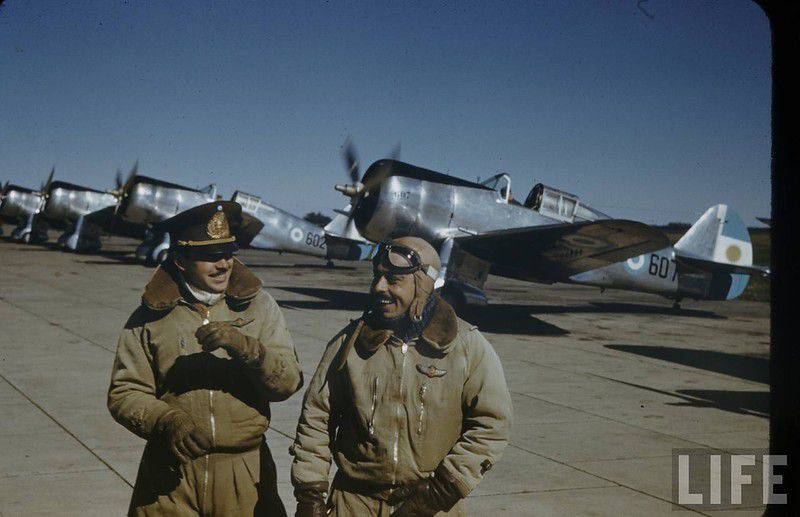
At the same time, the Argentines acquired a license for Hawk -75O. Production was planned at the "Military factory de aviones". The first one built on the FMA "Hawk" was taken out of the 16 workshop in September of 1940. In total, 20 machines were manufactured. Some of them flew until the sixties.
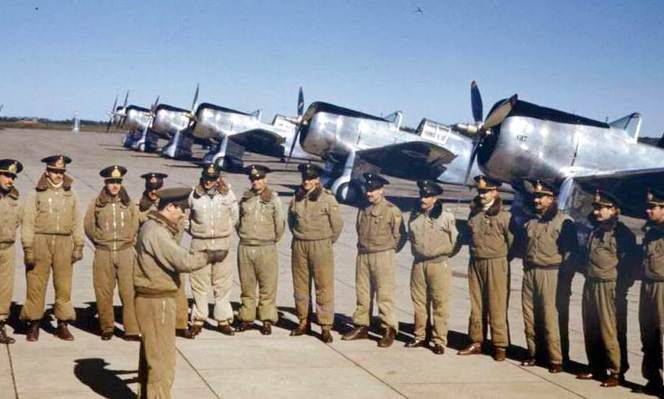
The designation “model 75Q” was given to two demonstration planes with a fixed chassis for an R-1820 engine. One of them was altered under the cleaned chassis and presented to his wife Chai Kan-shi. She handed over the aircraft to General Sheno, who was then engaged in the reorganization of the Chinese Air Force. The second aircraft was demonstrated in China by American pilots, but 5 was defeated on May 1939, right after takeoff.
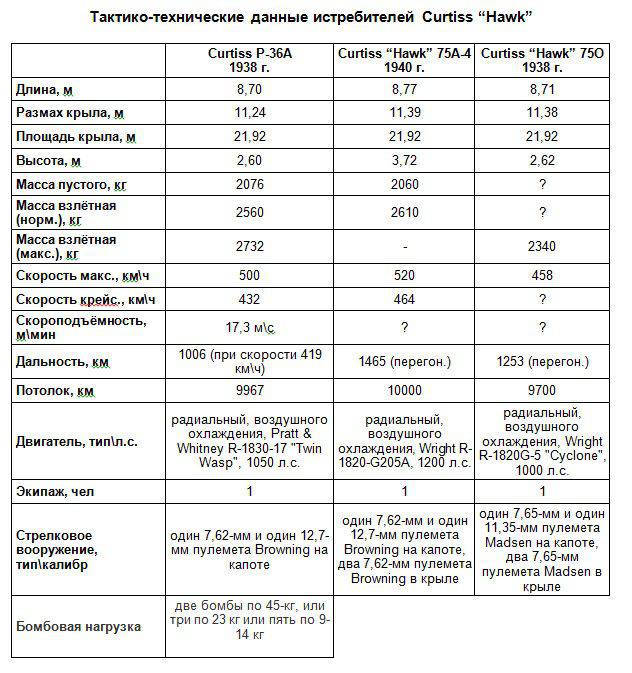
Sources:
Kotelnikov V. "Model 75". About fighter P-36 "Hawk 75" company "Curtist" and its modifications // Wings of the Motherland. 2002. No.2. C.24-28.
Kotlobovsky A. "Donkey Hawks" of Berlin // Aviation and Time. 2000. No.3. C. 35-38.
Firsov A. US Fighters // Aviation Collection. No.13. C. 39-44.
Bykov M. "Hawk" in the sky of World War II // Aviamaster. 2000. No.3. C.28-34.
Haruk A. Fighters of the Second World War. M .: Yauza Press, 2012. C. 231-233.
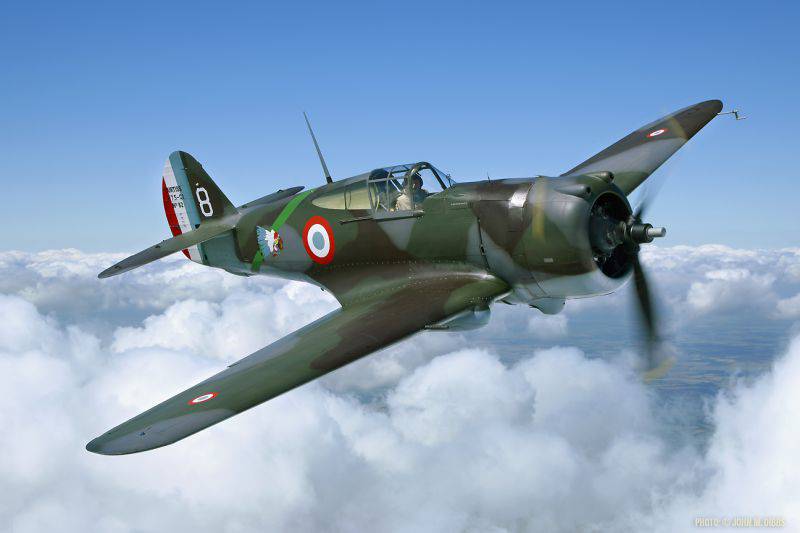
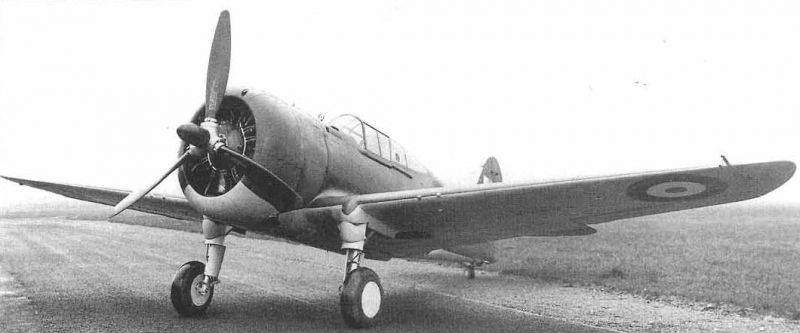
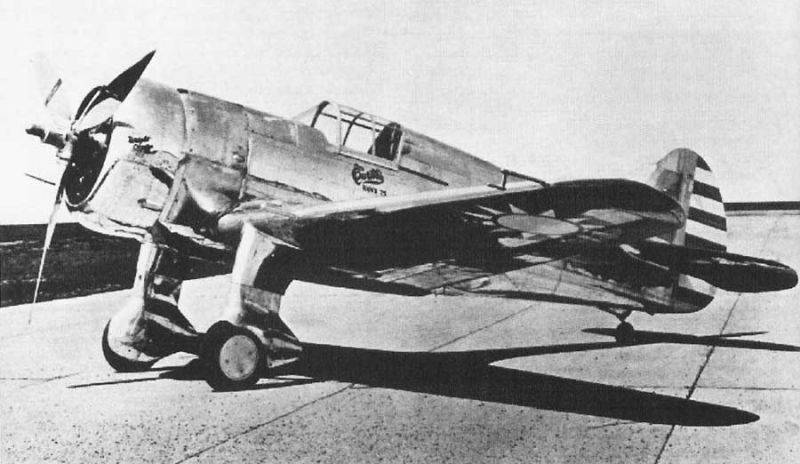
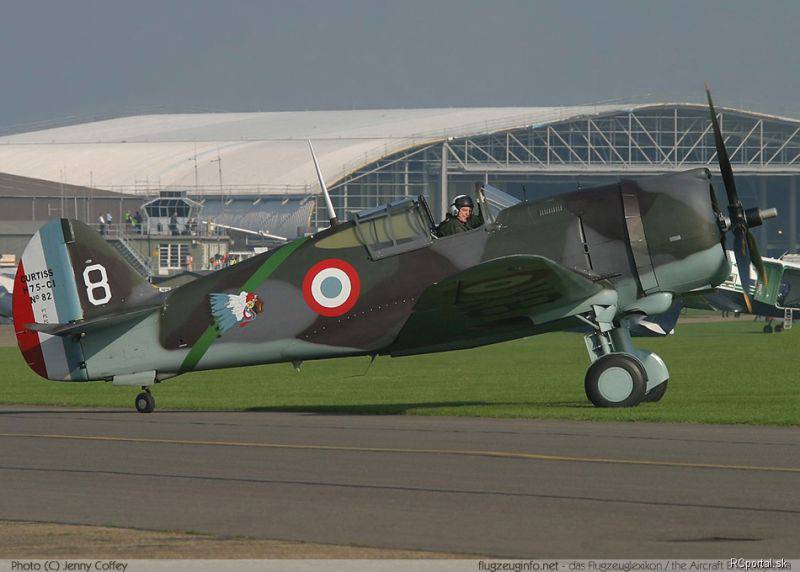
Information